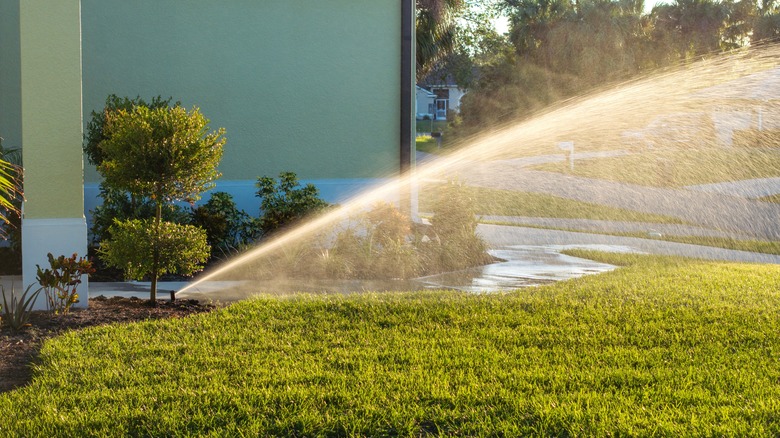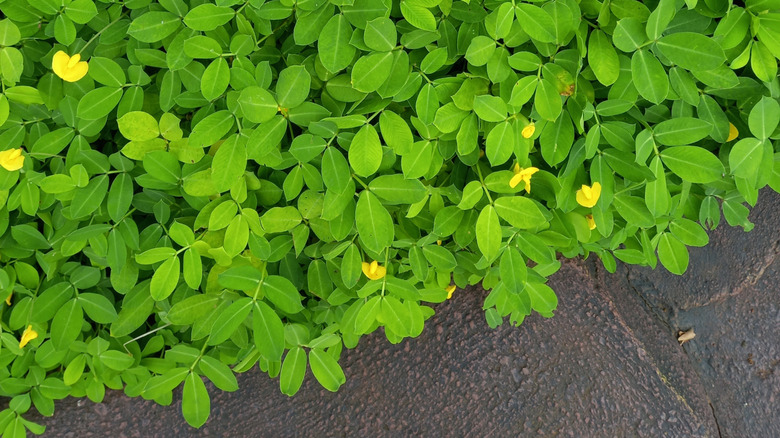Switch To A Yellow Flowering Ground Cover For A Drought Tolerant, Colorful Lawn
It's no secret that a healthy green lawn takes a fair amount of work to maintain its lush appearance. This also means using copious amounts of water, especially during dry spells, to stop the grass from drying out and leaving bare patches. That's why many homeowners are looking for a more eco-friendly grass and lawn alternative that's drought-tolerant and also looks beautiful all summer long. While there are plenty of drought-resistant grass alternatives for your yard, why not copy what agricultural growers have been doing for many years to maintain the health of their soils, and grow perennial peanut (Arachis glabrata) as a ground cover instead?
This species is just one of the groundcover peanut varieties you can grow as a grass alternative. It's a leguminous plant that has the added benefit of being able to convert atmospheric nitrogen into a form that will enrich the soil and assist with plant growth. As a lawn alternative, this means you only need minimal fertilizer for this ground cover, which is just another saving you're going to enjoy. Plus, instead of that lush green grass that requires so much upkeep, your lawn area will be covered with a delightful sea of bright yellow flowers that will bloom right through the summer. Best of all, this pretty ground cover can be grown on slopes to prevent soil erosion, helps to suppress weeds, and will also attract pollinators such as bees to your yard.
How to use perennial peanut as a lawn substitute
Perennial peanut grows best in frost-free areas (USDA hardiness zones 8 through 11) because it will drop its leaves in colder climates. As this plant spreads through rhizomes, you'll end up with a lovely, dense cover if you mass plant it by spacing the plants around 12 to 18 inches apart. This colorful ground cover prefers fairly sandy, well-drained soils and full sun. However, it will also grow in part shade, but just not flower as prolifically. It's best to give young plants regular water until they've become well-established, after which they won't need much extra irrigation. This low-maintenance ground cover may only need feeding once a year with a fertilizer that's high in potassium.
While there are plenty of advantages to replacing your lawn with this ground cover, there are a couple of aspects you should consider by understanding how to tackle issues when growing perennial peanut as a grass alternative. First of all, this ground cover doesn't appreciate a lot of foot traffic, so you might have to put down some paving stones if the lawn area is a bit of a thoroughfare. Additionally, although this plant is drought-tolerant, it may lose its leaves if the soil becomes overly dry, so the occasional watering during extended dry times will be necessary.

